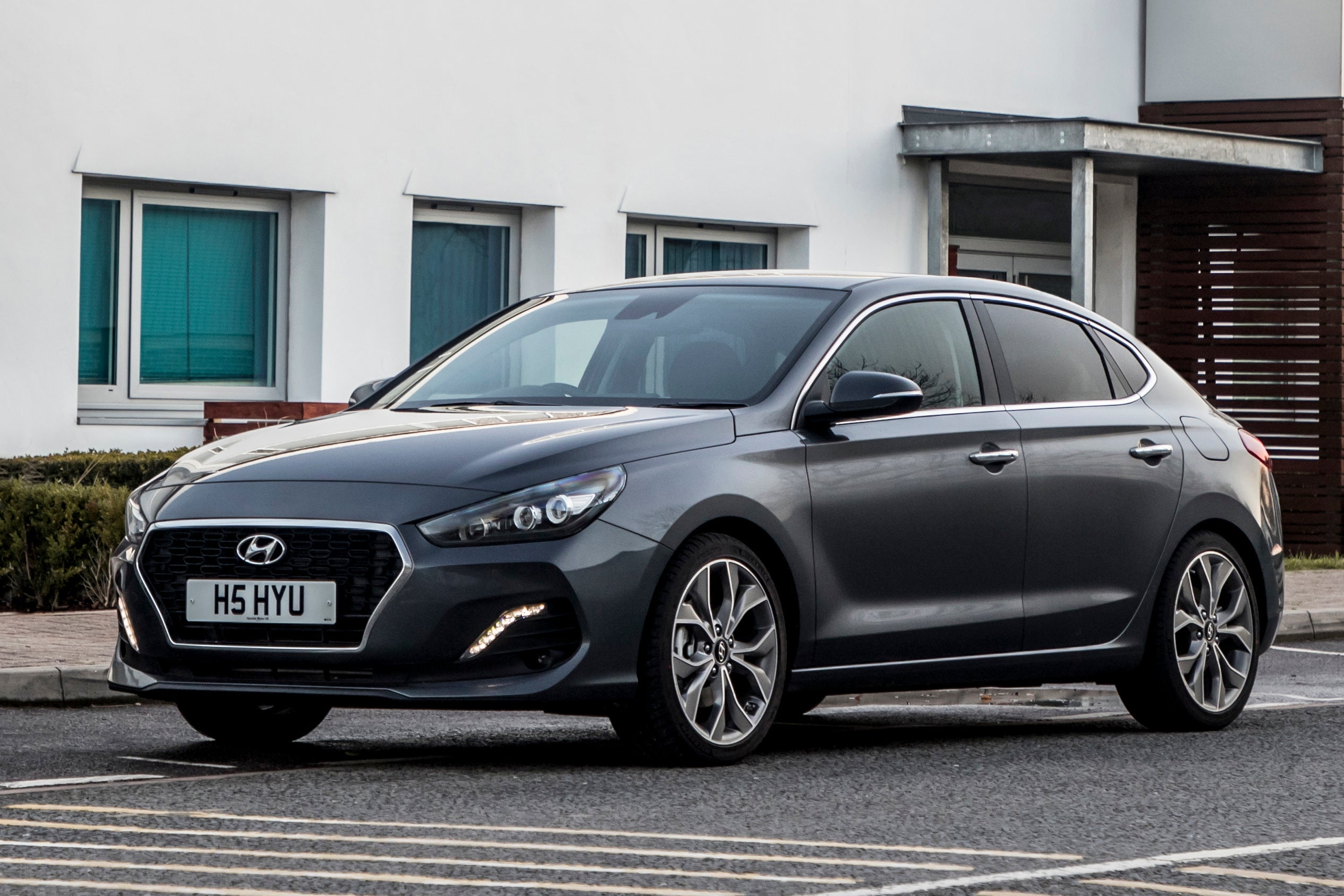Hyundai i30 Fastback Review 2024
Written by Al Suttie
Quick overview
Pros
- Stylish version of i30 hatch
- Plenty of standard kit
- Excellent warranty
Cons
- Restricted rear headroom
- Reduced boot space
- Not as good to drive as it looks
Overall verdict on the Hyundai i30 Fastback
“A dash of coupe-like style helps the Hyundai i30 Fastback stand out in the busy mid-size hatch sector. There’s a little less headroom in the back, but otherwise the Fastback retains all that is great about the i30.”
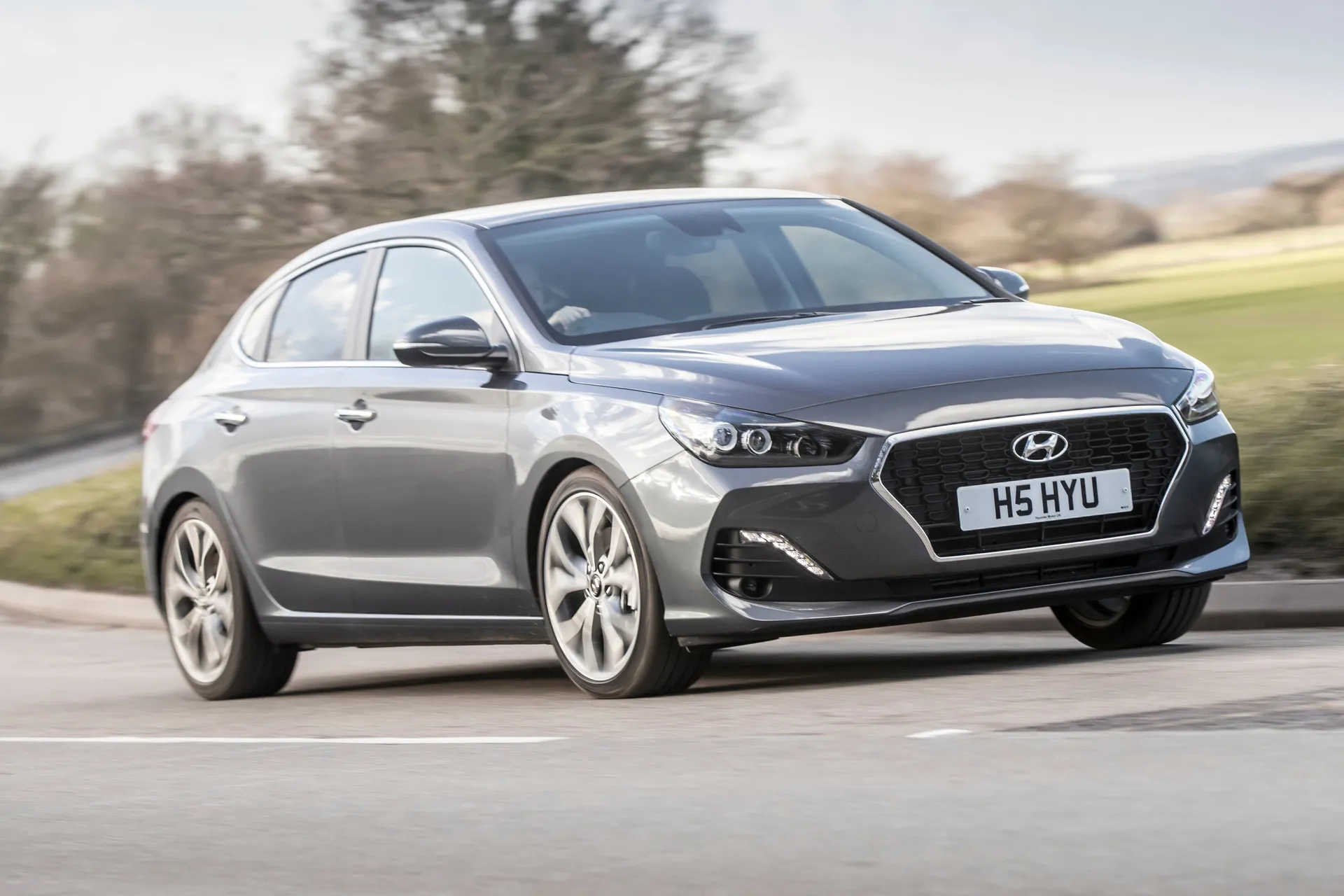
Hyundai has become something of a rule-breaker in its approach to the mid-size family hatch. It all started with the Hyundai Veloster, which could be viewed as a coupe with an extra door or a hatch missing one side door. The idea didn’t really catch on, though MINI managed decent sales of its original Clubman with a similar layout, but the i30 Fastback is a much sounder proposal.
Taking its cues from the executive sectors where four- and five-door coupe models now abound, the i30 Fastback brought this thinking right into the mainstream. It was quietly dropped from the company’s range in 2023 along with the Hyundai i30 Tourer estate, leaving just the Hyundai i30 hatch to fly the flag in this segment of the market for the South Korean company.
That’s something of a pity as the i30 Fastback offered some diversity and greater choice to buyers who were not fully wedded to another Volkswagen Golf rival hatch or have need of an estate.
However, the i30 Fastback is still here as a used car and one that for some drivers will be a very persuasive package. For starters, there are the looks where the tailgate swoops down at a much more dramatic angle than the hatch’s to make this arguably the most elegant car in its class.
That sweep of the roof does mean there’s a little less room for heads in the back seat, but not by too much. There is also not quite as much boot space as in the Tourer but the Fastback’s 450-litres of cargo space is better than the hatch’s even if you don’t have the same height for the length of the load bay.
More than compensating for this is the style of the Fastback’s cabin, which is shared with its i30 siblings. It all looks very stylish, is well made, and the infotainment system ranks as one of the easiest to use. Some lighter colours for the cabin’s materials would have helped lift the overall feel, but the mostly black palette still looks classy.
This is backed up by a sound engine range shared with the hatch. When first launched, the Fastback was offered with 1.0- and 1.4-litre turbo petrol engines. These then gave way to a 1.5-litre turbo petrol with mild hybrid assistance that provided 160PS and a decent turn of pace.
Alternatively, you could have a Fastback with the pace to match its low-slung looks in the N Performance model. It has a 275PS 2.0-litre turbo petrol engine and can see off 0-62mph in 6.1 seconds and head on to a top speed of 155mph.
Whichever engine suits your needs, the Hyundai i30 Fastback makes for a graceful alternative to its hatch rivals in the used market.
Looking for a used car for sale? We've got 100s of Hyundai Approved Used Cars for Sale for you to choose from, including a wide range of Hyundai i30 Fastback cars for sale.
Is the Hyundai i30 Fastback right for you?
If your head and heart come to an agreement on car choice, the outcome is likely to be the Hyundai i30 Fastback. After all, it has the style and pace to satisfy your heart’s passions yet also delivers all of the practical, sensible elements that your head deems necessary. With more boot space than an i30 hatch, the Fastback ticks a box there, and its running costs are the same as its hatch sibling. All that wrapped in a lower, more sporting body shape holds great appeal.
What’s the best Hyundai i30 Fastback model/engine to choose?
When Hyundai launched the i30 Fastback, it offered it with the same 1.0- and 1.4-litre turbo petrol engines offering, respectively, 120- and 140PS. The more powerful engine is the better all-rounder as it’s quieter and smoother at higher speeds, and it has more in reserve for overtaking. Around town, the 1.0-litre is more than competent, though. The later 1.5-litre with hybrid assistance is the pick of the lot, however, if your budget stretches this nippy yet frugal package. Or, for hot hatch fans, there’s the 2.0-litre turbo motor with 175PS in the N Performance version.
What other cars are similar to the Hyundai i30 Fastback?
Pinning down rivals to the Hyundai i30 Fastback is tricky as there are none from mainstream car makers. The Mazda 3 saloon could be counted as one but misses the hatchback versatility of the Hyundai. That leaves the more expensive BMW 2 Series Gran Coupe and Mercedes CLA as the only other options, and they are both pricier to buy without offering any great benefits in equipment or driving fun.
Comfort and design: Hyundai i30 Fastback interior
"Let’s deal with the most obvious point first: the Hyundai i30 Fastback’s shape does restrict rear headroom, but not by as much as you might expect. If you carry a brace of six-foot or taller teenagers or adults in the back of your car routinely, they may well begin to grumble on longer journeys in this Hyundai."
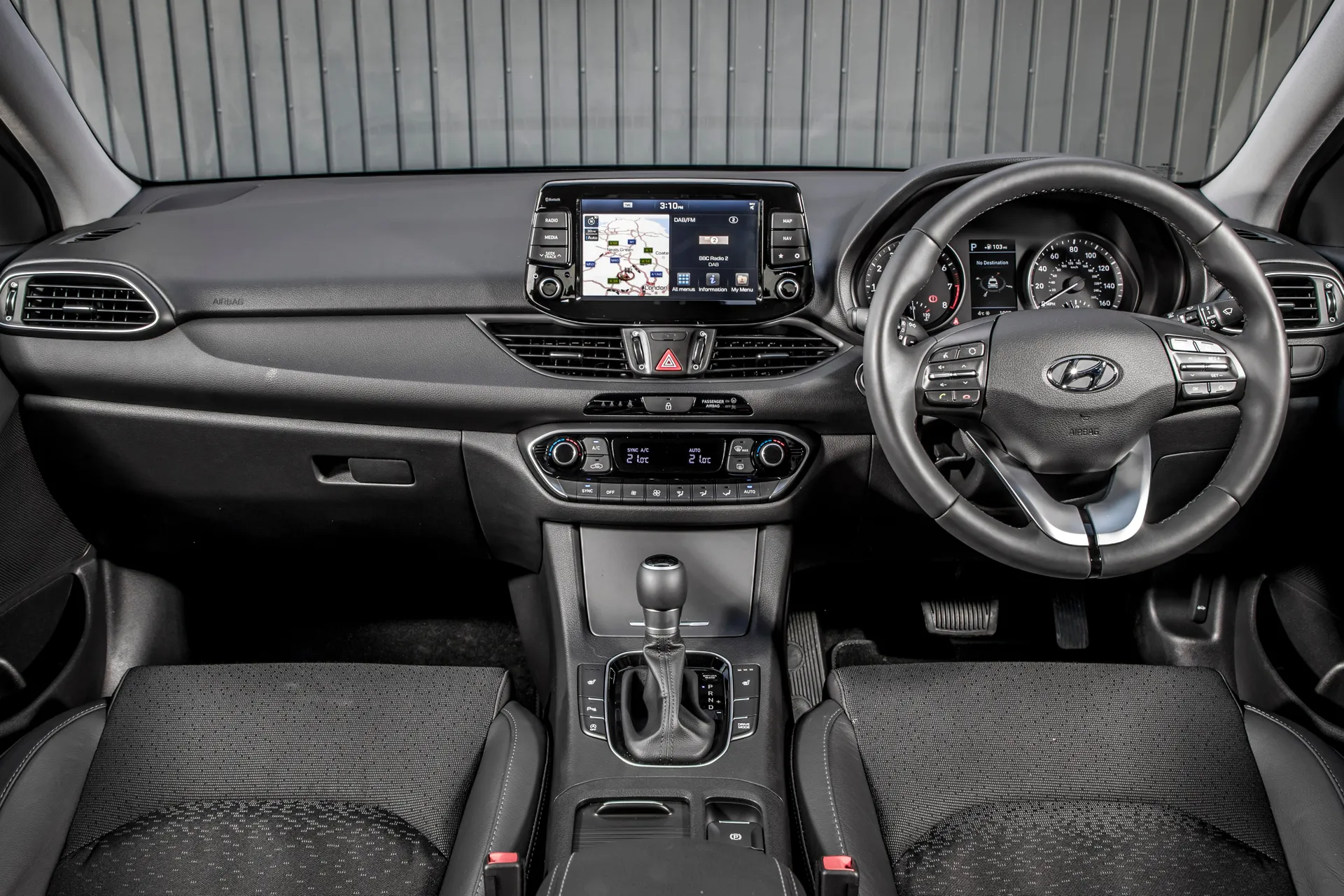
For everyone else, it’s more than adequate and the rear bench is well shaped for support. There is also more than sufficient knee and shoulder space for a couple of adults or three kids to relax back there.
Up front, the driver and passenger are well looked after and have as much space as you could need or want. The driver’s seat has lots of adjustment, as does the steering wheel, which leaves only the limited vision to the rear as a demerit for the i30 Fastback’s driver environment.
The dash is the same as the hatch’s, so you get a clear main instrument binnacle with digital dials, separate physical buttons for the heat and air conditioning, plus Hyundai’s simple, clear infotainment screen set high on the dash.
Quality and finish
There is no doubting the durability and reliability of the Hyundai i30 Fastback both inside and out. All of the cabin’s controls work with a positive action that tells you they will still be doing the same thing after many years and miles.
It’s not quite as plushly finished inside the Fastback as, say, a Peugeot 308, but that’s more due to the French car being superbly well detailed in this area. There are still plenty of soft-touch and padded surfaces in the i30 for it to feel very high grade.
Infotainment: Touchscreen, USB, nav and stereo in the Hyundai i30 Fastback
A large 10.25-inch touchscreen display on top of the Hyundai i30 Fastback’s dashboard houses the infotainment system. This puts it easily in line of sight when glancing down from the road ahead, and it’s also easy to reach from the driver’s seat. Some functions can also be worked from the steering wheel buttons, such as the radio channel or volume, or the hands-free phone connection.
The infotainment system is a really good one and up there alongside Ford’s SYNC system. The screen responds promptly when pressed, it looks bright and the graphics are crisp. There’s a relatively small number of menus, so it’s easy to learn where to find the features and information you want and need.
Speaking of which, among the features included in the system are sat-nav, DAB radio and Bluetooth. You can also connect your phone via Apple CarPlay or Android Auto if you’d rather have access to your preferred navigation and entertainment apps.
There’s also a seven-inch display screen for the driver that can show everything from basic driving info to music selections and large-format sat-nav instructions.
Space and practicality: Hyundai i30 Fastback boot space
You could be forgiven for thinking a sportier take on the hatch theme would compromise on practicality, yet the Hyundai i30 Fastback has a boot that is bigger than its hatch sister model.
At 450-litres, the Fastback has 55-litres more capacity than the hatch version, so you’ll have no trouble fitting in all the usual stuff you encounter in daily life.
There is a high load sill to lift weightier bags over, however, and quite a drop from there to the load floor that makes getting those same bags out also needs a bit of muscle and care not to strain your back.
Tie-down points and a couple of hooks for shopping bags add to the practicality, and you can tip the 60-40 split rear seats forward to free up as much as 1351-litres, which is again more than the hatch can muster. However, the Fastback’s rear bench doesn’t tumble forwards or fold flat into the floor, so you are left with a considerable step in the load bay when dealing with longer loads.
As a small counter to this, the normal boot floor is height adjustable, so in its higher position you have some hidden storage underneath the boot panel.
Handling and ride quality: What is the Hyundai i30 Fastback like to drive?
"There are some subtle but important changes that make the Hyundai i30 Fastback a little more sporting to drive than its hatch and Touring estate sister models. The most telling of these are the suspension is lowered by 5mm compared to the hatch’s and it’s 15% firmer."
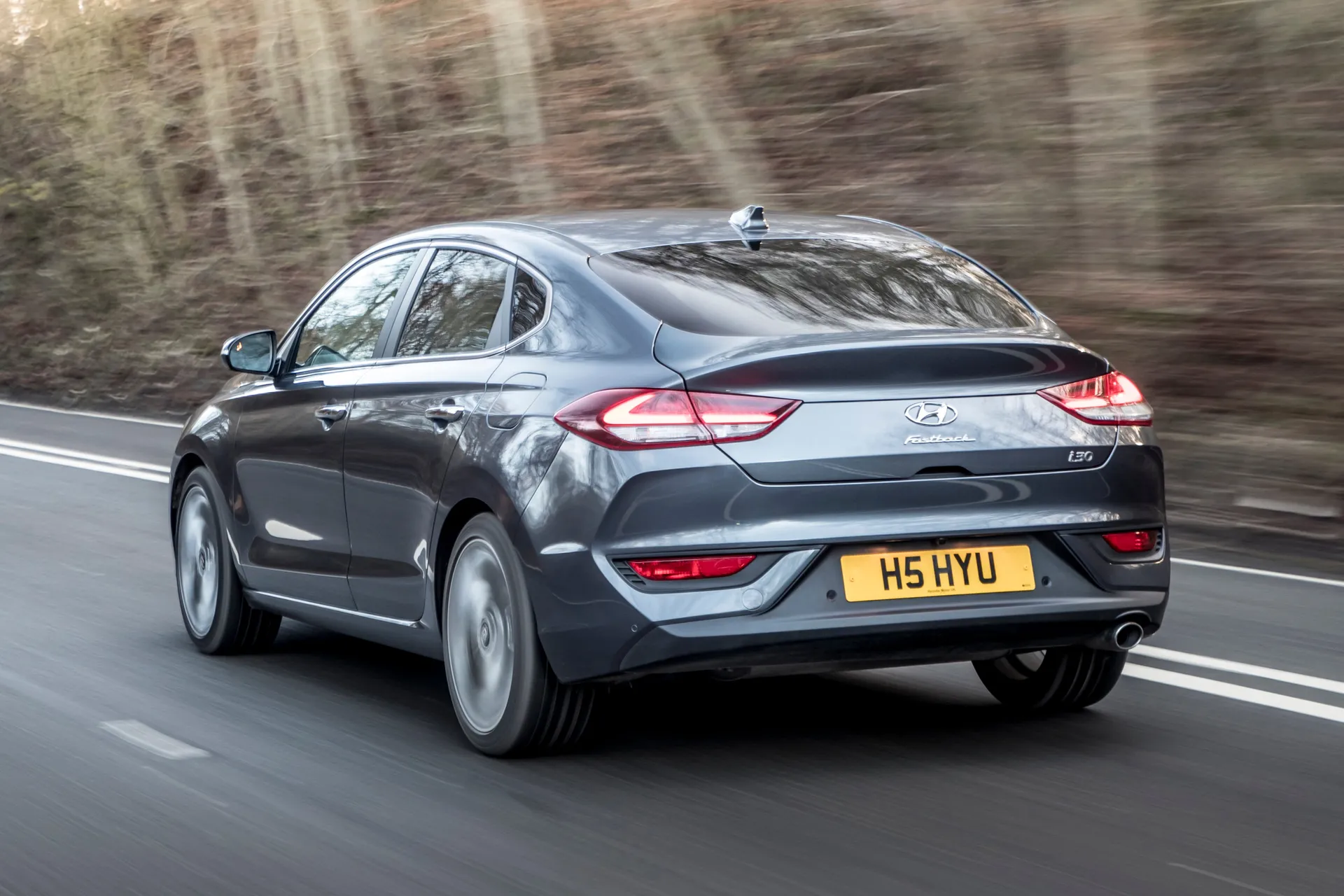
Overall, the Fastback is 30mm lower than the hatch because of its roofline, which all goes to making it feel more agile and entertaining on the road. The steering has a nice weighting, is responsive and accurate, and provides some information about what the surface of the road is like.
You quickly build confidence and trust in the car, so it’s actually quite rewarding and fun to drive on a country road, though not quite as much as a Ford Focus.
The ride is on the firm side, yet not uncomfortably so, and the steering is light enough for effortless town driving. The view of the front of the car is very good, but you’ll be glad of the sensors and cameras when parking. It feels solid and stable on motorways.
With the N Performance version of the Fastback, it all goes up a few notches in the fun stakes. It’s a serious rival to the Ford Focus ST or Volkswagen Golf GTI thanks to its fine steering feel and suspension that can be adapted with different settings to suit the road surface. It’s not quite as good to drive as a Focus ST, but the Hyundai gives the Golf GTI more than a lot to worry about.
What engines and gearboxes are available in the Hyundai i30 Fastback?
When the Hyundai i30 Fastback was launched, there were two engines to pick from – a 120PS 1.2-litre turbo petrol and a 1.4-litre of the same ilk with 140PS.
The three-cylinder 1.0-litre engine does a very good job around town and its six-speed manual gearbox has a light, crisp feel. It’s happy to rev and can manage 0-62mph in 111.5 seconds, but it’s not the ideal choice for those who cover a lot of motorway miles.
A better bet for longer distance driving is the 1.4-litre four-cylinder engine, which has a manual six-speeder as standard or an automatic transmission as an alternative. It pulls with more force from all revs and needs just 9.2 seconds to get from 0-62mph. That makes all the difference on faster roads and inclines, and the 1.4 is also more refined than its smaller stablemate.
In 2022, Hyundai replaced both of these engines with a single unit – the 1.5T GDi hybrid. It comes with 160PS and has six-speed manual or seven-speed automatic transmissions. Acceleration is a step up, taking 8.3 seconds from 0-62mph, and it pulls with more than enough urgency for overtaking or pulling out of busy junctions.
Finally, there is the 275PS 2.0-litre turbo petrol of the N Performance version of the Fastback. It needs just 6.1 seconds to cover 0-62mph and it will head on to 155mph. It also has a sporty crackle to the exhaust note when you select the N driving mode.
Refinement and noise levels
The firmer suspension set-up of the Fastback compared to the hatchback Hyundai i30 does introduce some more noise to the cabin at all speeds. While we wouldn’t call it loud or uncouth, it is there all of the time and the Fastback is not as refined as a Mercedes CLA.
The engines, however, are more than happy to settle into the background and remain barely audible when cruising along in town or on the motorway. Put your foot down hard and there is some roar from under the bonnet but nothing to disturb the cabin’s peace.
In the N Performance model, it can make as much or as little noise as you want depending on which drive mode is selected.
Wind noise is not an issue with the i30 Fastback thanks to its shape, so sustained motorway driving is a pleasant experience.
Safety equipment: How safe is the Hyundai i30 Fastback?
The whole Hyundai i30 range, including the Hyundai i30 Fastback, was awarded a five-star safety rating by the experts at Euro NCAP. It scored more than 80 percent for protecting adult and child occupants in a crash. The assessors were impressed with other aspects of the car’s safety as well.
Plenty of driver assistance features are fitted to the i30 Fastback. They include cruise control with a speed limiter, automatic emergency braking, lane-departure warning, lane-keeping assist, a driver attention monitor, and a notable nine airbags.
MPG and fuel costs: What does a Hyundai i30 Fastback cost to run?
"None of the non-N Performance petrol engines in the Hyundai i30 Fastback will trouble your wallet too much when it comes to filling up. The 1.0-litre motor delivers a combined economy of up to 47.1mpg."
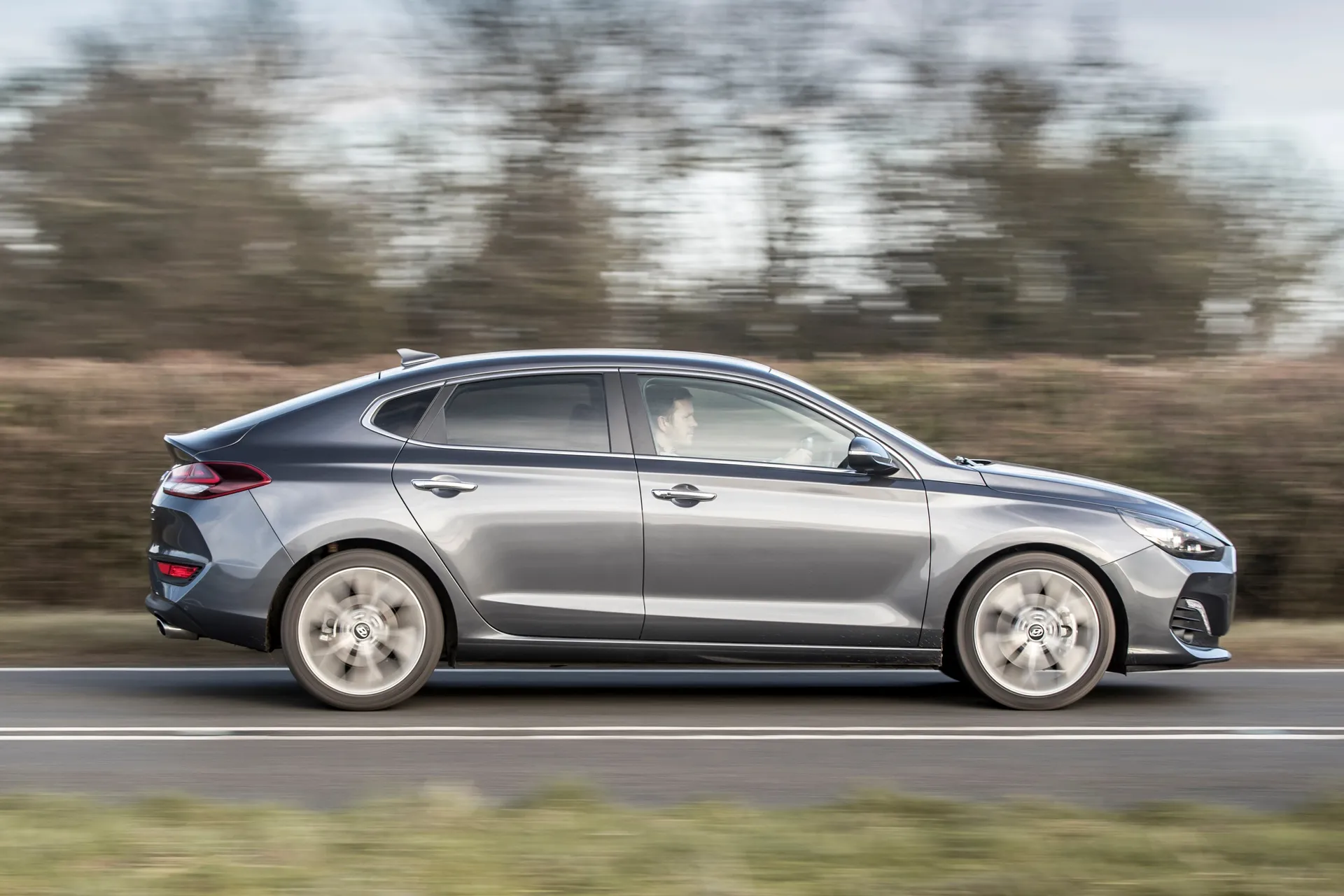
Take the 1.4-litre engine with the manual gearbox and it offers 45.6mpg or, with the seven-speed automatic transmission, you have an official claimed figure of 46.3mpg.
Opt for the later 1.5T GDi with its 48-volt hybrid assistance and you’ll find the official average economy comes in at 45.6mpg for the manual and 47.1mpg for the auto, so it’s very similar to the smaller engines while offering more power and performance.
If the hot hatch N Performance i30 Fastback is the car for you, it has a claimed economy of 35.3mpg with the manual gearbox or 33.6mpg when coupled to the auto ’box. In the real world, we’ve found both hover around the 30mpg mark.
How reliable is the Hyundai i30 Fastback?
Hyundai sits very comfortably inside the top 10 of car makers in the most recent HonestJohn Satisfaction Survey, so it bodes well for the ownership prospects of the i30 Fastback.
Hyundai has built up a strong reputation for the quality of its cars, which is backed up by a five-year, unlimited mileage warranty.
Insurance groups and costs
Your insurance premium for the Hyundai i30 Fastback will be based on groups running from 8 to 18 for the main models.
A 1.0-litre SE Nav model sits in Group 8, while the 1.4-litre version in SE Premium spec will reside in Group 15. Go for the 1.5t GDi engine in the later N Line specification and it edges up into that higher Group 18 bracket.
For the N Performance hot hatch, you’ll be looking at cover using a Group 29 rating, which puts the Hyundai on a par with the likes of the Ford Focus ST, Cupra Leon, and Volkswagen Golf GTI.
VED car tax: What is the annual road tax on a Hyundai i30 Fastback?
As a used car now, all Hyundai i30 Fastback models will pay £180 per year for road tax. Even the N Performance model comes into this bracket – there’s not the additional £390 charged for cars that cost more than £40,000 as the hot hatch cost below this threshold when new.
For company drivers, the hot hatch’s 182-191g/km of carbon dioxide emissions will make it expensive for Benefit in Kind payments, while the 1.5 Hybrid softens that particular blow with emissions of between 137- and 142g/km.
How much should you be paying for a used Hyundai i30 Fastback?
"Around £11,500 is starting money for a five-year old Hyundai i30 Fastback, which will net you a car with the 1.0- or 1.4-litre engine in SE Nav trim."
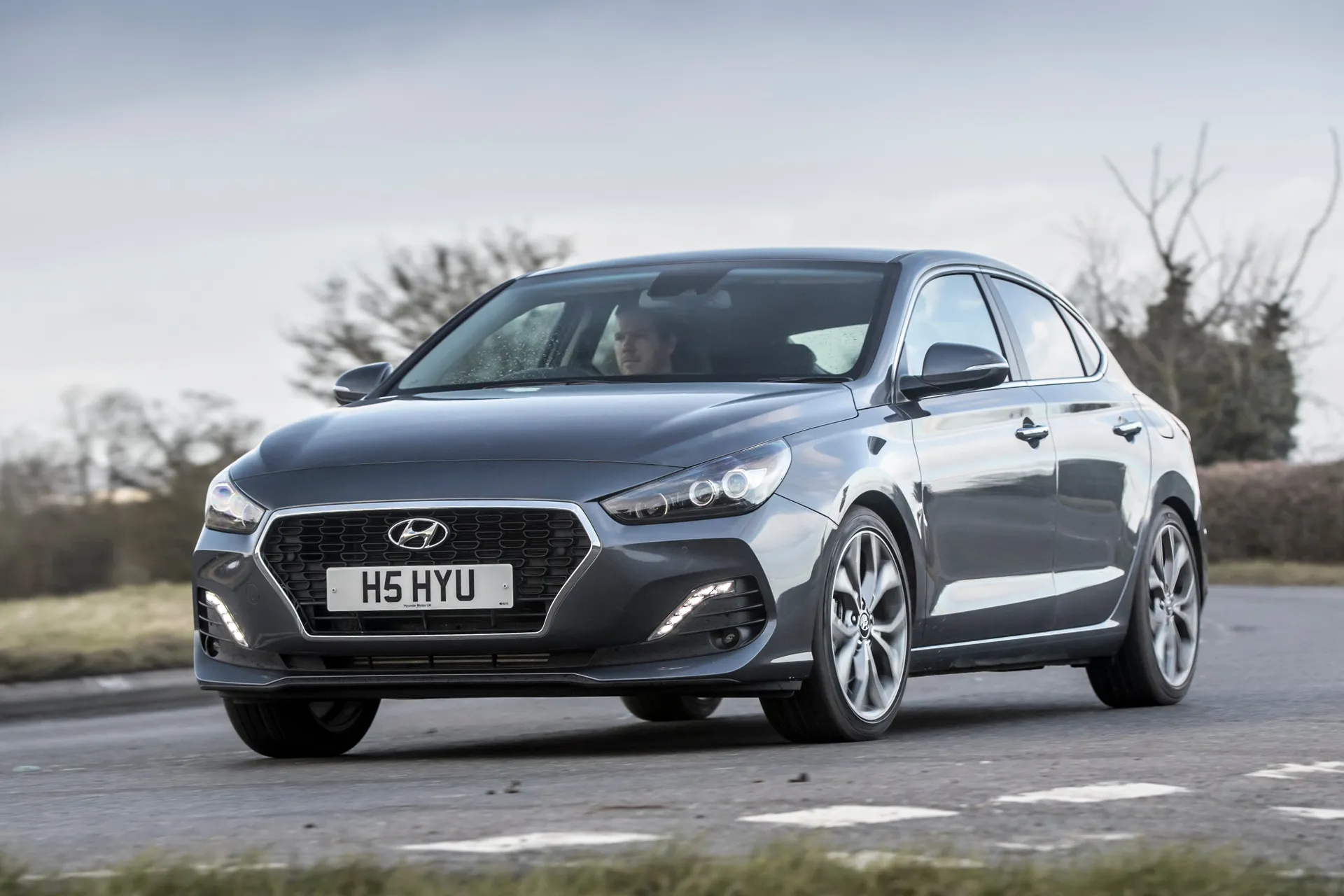
For a Premium version of the Fastback, you’ll have to budget from £13,500, while the later 1.5T GDi engine in N Line trim goes from £19,500.
Hot hatch fans will pay from £20,000 for the N Performance model and that will park a four-year old example with 50,000 miles on your driveway.
Trim levels and standard equipment
When Hyundai launched the i30 Fastback in 2018, it started in SE Nav trim that came with an 8.0-inch infotainment touchscreen, DAB radio, Bluetooth, lane departure warning, and cruise control. There’s also a wireless phone charging pad.
On the outside, 16-inch alloy wheels are standard, along with a reversing camera, rear parking sensors, and electrically adjusted and heated door mirrors. Electric windows are included for all four door, and there’s air conditioning, as well as electric lumbar support adjustment for the driver’s seat.
Move to the Premium trim and you gained 18-inch alloy wheels, panoramic glass sunroof, dual zone climate control, and electric driver’s seat adjustment.
The N Line is marked out by 18-inch alloy wheels and a body kit consisting of deep bumpers and side skirts. On the inside, you’ll find sports front seats.
The infotainment system has a 10.25-inch touchscreen display with sat-nav, DAB radio, Bluetooth and Apple CarPlay/Android Auto phone connectivity, allowing you to use your favourite smartphone navigation and entertainment apps via the screen. The driver has a 7.0-inch display that shows driving and vehicle info.
You also get dual-zone climate control, cruise control, front and rear parking sensors, a reversing camera and keyless entry and start. Safety features include automatic emergency braking, lane-departure warning, lane-keeping assist and a driver attention monitor.
Being the rapid version of the Hyundai i30 Fastback, the N Performance has bigger 19-inch wheels, a more sculpted body kit and lowered suspension. It also comes with some extra goodies, including electrically adjustable and heated front seats, driving position memory, a heated steering wheel and a wireless phone charging pad.
Ask the heycar experts: common questions
Is servicing a Hyundai i30 Fastback expensive?
What is a Fastback?
Will the Fastback depreciate more than other Hyundai i30 models?
Get our latest advice, news and offers
Keep me updated by email with the latest advice, news and offers from heycar.
By submitting you agree to our privacy policy
